Do you want to build a strong and muscular chest but worry that your bad knees might prevent you from doing the bench press?
As we age, our joints tend to get weaker and more susceptible to pain. This is especially true for our knees, which are constantly bearing our weight.
If you’re a senior with bad knees, you may be wondering if you can still do bench press safely.
If so, you are not alone.
The good news is that you can still bench press safely, even if you have bad knees. However, there are a few things you need to do to make sure you’re doing it correctly and avoiding injury.
Many seniors struggle with knee pain, which can limit their exercise options and affect their quality of life.
However, that does not mean you have to give up on the bench press, one of the most effective exercises for developing your chest, shoulders, and triceps.
In this article, you will learn how to do a bench press with the proper form and technique, how to modify the exercise to suit your needs and preferences, and how to prevent and manage knee pain while doing the bench press.
What Is the Bench Press and Why Should You Do It?

The bench press is an exercise that involves lying on a flat or inclined bench and pushing a barbell or a pair of dumbbells away from your chest until your arms are fully extended.
The bench press works mainly your pectoralis major (chest) muscles but also engages your anterior deltoid (front shoulder) and triceps brachia (back of upper arm) muscles.
Here is a table highlighting different muscles and functions.
| Muscle | Function |
|---|---|
| Pectoralis major | Horizontal shoulder adduction |
| Anterior deltoid | Shoulder flexion and horizontal shoulder adduction |
| Triceps brachii | Elbow extension |
| Biceps brachii | Elbow flexion and forearm supination |
| Serratus anterior | Scapular protraction and upward rotation |
| Rectus abdominis | Spinal flexion and stabilization |
| External oblique | Spinal flexion, rotation, and lateral flexion |
| Rectus femoris | Hip flexion and knee extension |
The bench press is a great exercise for seniors because it can help you:
- Improve your upper body strength and power, which can make everyday activities easier and prevent falls and injuries
- Increase your muscle mass and bone density, which can slow down the effects of aging and protect you from osteoporosis and sarcopenia
- Enhance your posture and shoulder stability, which can reduce the risk of shoulder pain and impingement
- Boost your confidence and self-esteem, which can improve your mental health and well-being.
How to Do a Bench Press with Proper Form and Technique
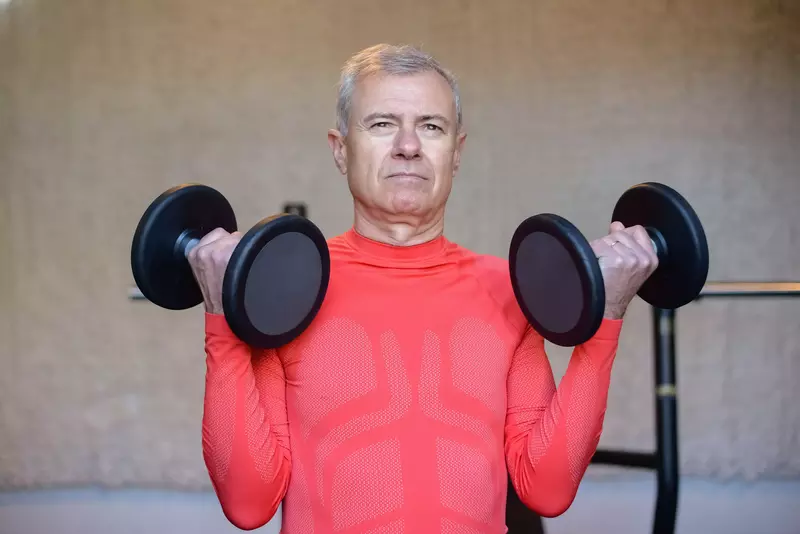
To do a bench press with proper form and technique, you will need a bench, a barbell, or a pair of dumbbells, and optionally, a spotter (someone who can assist you if you need help).
Here are the steps to follow:
- Lie on the bench with your back flat, holding the barbell or the dumbbell directly above your chest.
If you are using a barbell, make sure it is centered on the rack and use an overhand grip that is slightly wider than shoulder-width apart.
If you are using dumbbells, hold them with your palms facing each other or slightly forward. - Engage your core muscles, squeeze your shoulder blades together, and plant your feet firmly on the floor.
Your feet should be about hip-width apart and slightly behind your knees. This will create a stable base for you to press from. - Lower the weight slowly and under control until it touches or comes close to your chest.
Keep your elbows at a 45-degree angle from your torso, not flared out to the sides.
This will protect your shoulders from injury and target your chest muscles more effectively. - Press the weight back up to the starting position, extending your arms fully but not locking out your elbows.
Exhale as you press and inhale as you lower.
Keep your wrists straight and aligned with your forearms throughout the movement. - Repeat for the desired number of repetitions or until you reach failure (the point where you cannot complete another repetition with good form).
If you are using a barbell, rack it safely after each set.
If you are using dumbbells, lower them to your sides or bring them to your chest before sitting up.
Here is a table highlighting the variations and benefits of the bench press.
| Variation | Description | Benefits |
|---|---|---|
| Incline bench press | The bench is angled upward between 15 and 45 degrees, so you are leaning back slightly. | Targets more of the upper chest and front shoulders. |
| Decline bench press | The bench is angled downward, so when you lie down your feet are in a higher position than your head. | Targets more of the lower chest and triceps. |
| Narrow grip bench press | Your hands are narrower together on the barbell. | Works more of the triceps and forearms. |
| Tempo bench press | You change the speed or pause of the bench press, such as lowering the weight for 3 seconds, pausing for 1 second at the bottom, and pressing it up for 1 second. | Increases the difficulty and intensity of the exercise by altering the time under tension and the force production of your muscles. |
To help you visualize the proper form and technique for the bench press, here is a GIF that demonstrates how to do it with a barbell.
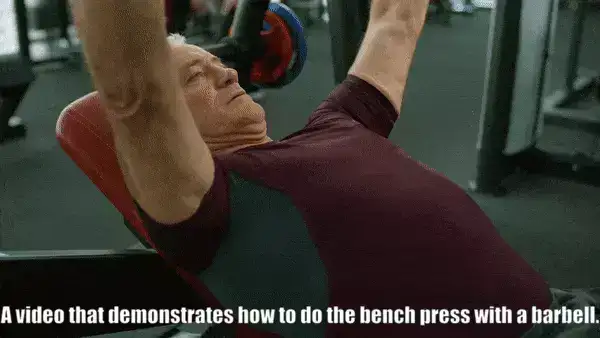
Here is another GIF video that shows how to do it with dumbbells with help of back rest.
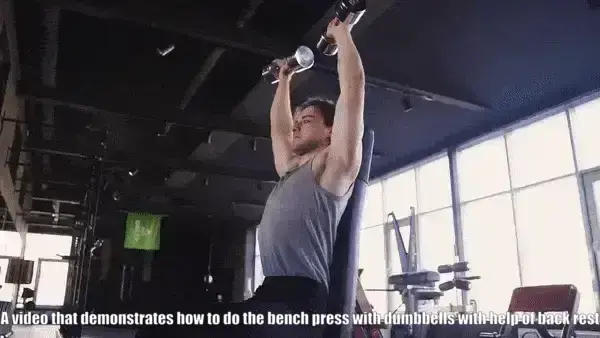
How to Modify the Bench Press to Suit Your Needs and Preferences
The bench press is a versatile exercise that can be modified in various ways to suit your needs and preferences.
Here are some common modifications that you can try:
- Change the angle of the bench: You can use an incline bench (15 to 45 degrees) or a decline bench (-15 to -30 degrees) instead of a flat bench to emphasize different parts of your chest muscles. An incline bench will target more of your upper chest and front shoulders, while a decline bench will target more of your lower chest and triceps.
- Change the type of weight: You can use different types of weight besides a barbell or dumbbell, such as kettlebells, resistance bands, or even your own body weight. These alternatives can provide different levels of resistance, stability, and range of motion for the bench press.
- Change the grip: You can use different grips for the bench press, such as a neutral grip (palms facing each other), a reverse grip (palms facing away from you), or a close grip (hands closer together). These variations can change the emphasis on different muscles involved in the bench press. A neutral grip will work more of your inner chest and triceps, while a reverse grip will work more of your upper chest and biceps. A close grip will work more of your triceps and less of your chest.
- Change the tempo: You can change the tempo or speed of the bench press, such as doing it faster, slower, or with pauses. These variations can increase the difficulty and intensity of the exercise by altering the time under tension and the force production of your muscles. For example, you can do a 3-1-1 tempo, where you lower the weight for 3 seconds, pause for 1 second at the bottom, and press it up for 1 second.
How to Prevent and Manage Knee Pain While Doing the Bench Press
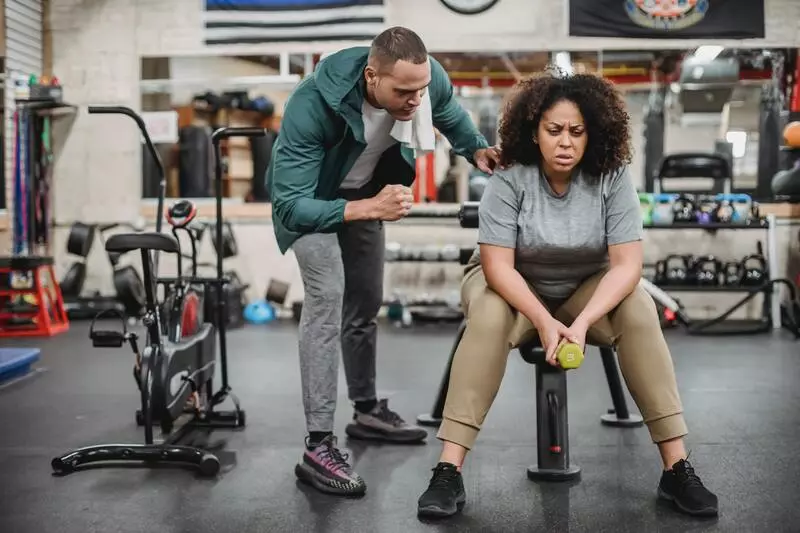
Knee pain is a common problem for many seniors, especially those who have arthritis, injury, or overuse of their knee joints.
While the bench press is not a direct cause of knee pain, it can aggravate it if you do not take some precautions.
Here are some tips to prevent and manage knee pain while doing the bench press:
- Warm up properly: Before you do any exercise, including the bench press, you should warm up your muscles and joints with some light cardio and dynamic stretches. This will increase your blood flow, lubricate your joints, and prepare your body for the workout. You can also do some specific exercises to warm up your knees, such as knee circles, leg swings, or squats.
- Use proper form and technique: As mentioned above, using proper form and technique for the bench press is crucial for avoiding injury and maximizing results. Make sure you keep your feet firmly on the floor and do not lift them up or move them around while pressing. This will prevent unnecessary stress on your knees and help you maintain balance and stability.
- Choose an appropriate weight: Do not use a weight that is too heavy or too light for your current strength level. A weight that is too heavy can cause you to lose form and strain your muscles and joints, including your knees. A weight that is too light can cause you to perform too many repetitions or sets, which can lead to overuse and fatigue of your muscles and joints. Find a weight that allows you to perform 8 to 15 repetitions with good form and moderate difficulty.
- Rest and recover: After you finish your bench press workout, you should rest and recover your muscles and joints with some cool-down exercises and stretches. This will help you reduce inflammation, soreness, and stiffness in your body. You can also use some ice packs, heat pads, or massage tools to ease any pain or discomfort in your knees. Additionally, you should give yourself enough time between workouts to allow your body to heal and adapt. Do not do the bench press more than two or three times a week, and alternate it with other exercises that work different muscle groups.
Another important factor that can affect your knee health is your footwear and supportive gear. You should wear shoes that fit well, provide adequate cushioning and support, and are suitable for your foot type and gait.
You can also use knee sleeves, braces, or wraps to provide extra compression, warmth, and stability for your knees while doing the bench press.
However, you should not rely on these devices as a substitute for proper form and technique.
You should also consult your doctor before using any supportive gear to make sure they are appropriate for your condition.
How to Overcome Your Fears and Concerns About Doing the Bench Press
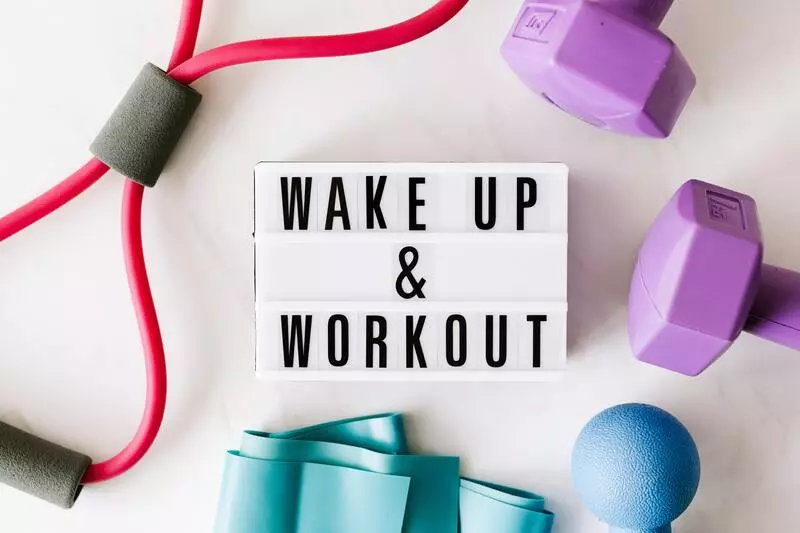
If you are a senior who wants to try the bench press but feels nervous or intimidated by it, you are not alone.
Many seniors have fears and concerns about doing the bench press, such as:
- Fear of injury: You may worry that you will hurt yourself or aggravate an existing injury by doing the bench press. This is understandable, as injuries can have serious consequences for seniors. However, as long as you follow the tips above on how to do the bench press safely and effectively, you can minimize the risk of injury and enjoy the benefits of the exercise.
- Fear of failure: You may worry that you will not be able to perform the bench press well or achieve your goals. This is normal, as everyone has doubts and challenges when trying something new. However, you should not let fear of failure stop you from trying the bench press. Instead, you should embrace failure as a learning opportunity and a motivation to improve. Remember that everyone starts somewhere, and progress takes time and effort.
- Fear of judgment: You may worry that others will judge you negatively or mock you for doing the bench press. This is common, as many seniors face ageism and stereotypes in society.
However, you should not let fear of judgment affect your self-esteem or confidence. Instead, you should focus on yourself and your own goals, not on what others think or say about you.
Remember that you are doing the bench press for yourself, and not for anyone else.
You should be proud of yourself for taking action and improving your health and fitness.
You should also remember that you are not alone in your journey. There are many other seniors who share your passion and enthusiasm for the bench press, and you can find support and inspiration from them.
You can join online communities, forums, or groups that cater to senior bench pressers, or you can look for local gyms, clubs, or classes that offer senior-friendly bench press programs.
You can also find a partner or a coach who can help you with your bench press goals and keep you accountable and motivated.
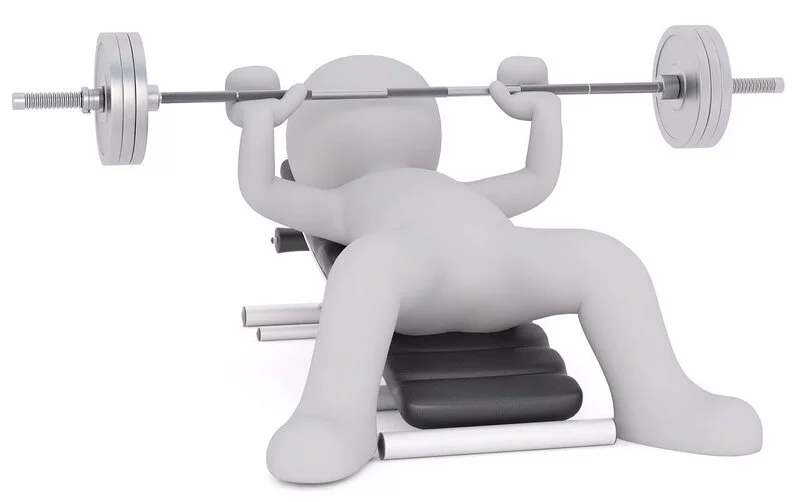
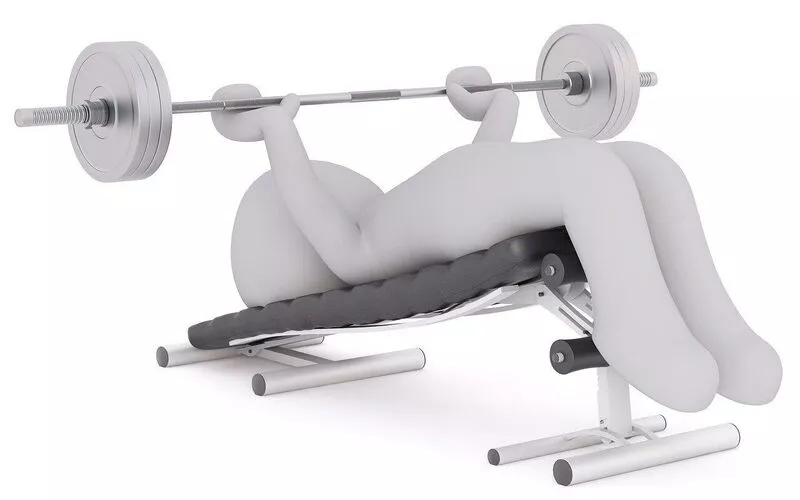

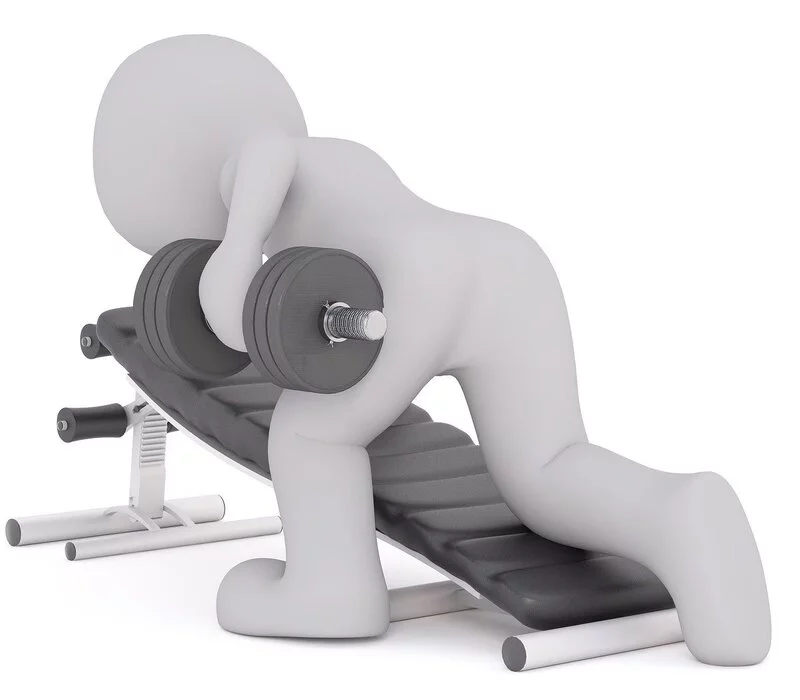
FAQs
Q: What muscles does the bench press work?
A: The bench press works mainly your pectoralis major (chest) muscles, but also engages your anterior deltoid (front shoulder) and triceps brachii (back of upper arm) muscles. It also involves some stabilizing muscles in your core, back, and legs.
Q: How much weight should I use for the bench press?
A: The amount of weight you should use for the bench press depends on your current strength level, your goals, and your experience. A general guideline is to use a weight that allows you to perform 8 to 15 repetitions with good form and moderate difficulty. You can also use a percentage of your one-rep max (1RM), which is the maximum amount of weight you can lift for one repetition. For example, you can use 60% of your 1RM for 10 to 12 repetitions.
Q: How can I improve my bench press performance?
A: There are several ways to improve your bench press performance, such as increasing the frequency, volume, or intensity of your training, using different variations of the bench press, incorporating accessory exercises that target the muscles involved in the bench press, and improving your nutrition and recovery.
Q: What are some common mistakes to avoid when doing the bench press?
A: Some common mistakes to avoid when doing the bench press are:
- Lifting your feet off the floor or moving them around, which reduces your stability and power.
- Flaring your elbows out to the sides, which increases the stress on your shoulders and reduces the activation of your chest muscles.
- Bouncing the bar off your chest, which can cause injury and reduces the effectiveness of the exercise.
- Arching your back excessively, which can cause lower back pain and reduces the range of motion of the exercise.
- Locking out your elbows at the top of the movement, which can cause joint stress and reduces the tension on your muscles.
Key Takeaways
Here are some key takeaways from doing the bench press:
- The bench press is an excellent exercise for seniors who want to build a strong and muscular chest, as well as improve their overall fitness and health.
- The bench press works mainly your pectoralis major (chest) muscles, but also engages your anterior deltoid (front shoulder) and triceps brachii (back of upper arm) muscles. It also involves some stabilizing muscles in your core, back, and legs.
- To do a bench press with proper form and technique, you need to lie on a bench, hold a barbell or a pair of dumbbells above your chest, lower the weight to your chest level, and press it back up while extending your arms.
- You can modify the bench press to suit your needs and preferences by changing the angle of the bench, the type of weight, the grip, or the tempo of the exercise.
- You can prevent and manage knee pain while doing the bench press by warming up properly, using proper form and technique, choosing an appropriate weight, resting and recovering, and wearing appropriate footwear and supportive gear.
Conclusion
The bench press is an excellent exercise for seniors who want to build a strong and muscular chest, as well as improve their overall fitness and health.
By following the tips in this article, you can learn how to do a bench press safely and effectively as a senior, even if you have bad knees.
You can also learn how to modify the bench press to suit your needs and preferences and how to overcome your fears and concerns about doing the bench press.
Remember to always consult your doctor before starting any new exercise program, especially if you have any medical conditions or injuries.
Happy benching!
References
Here are some reference to some government or university studies on “Bench Press for Seniors with Bad Knees”.
- A study by the National Institute on Aging (NIA) -The study emphasized the benefits of strength training for aging, particularly the bench press, in improving upper body strength, muscle mass, bone density, posture, and confidence. It provided tips for proper form, technique, and modifying exercises to suit individual needs and preferences, as well as preventing and managing knee pain during bench press exercises.
- A study by Harvard Health – The study suggests age-proofing knees and reducing knee pain through low-impact activities. Proper warming up, form, technique, weight selection, rest, recovery, and supportive gear are essential for preventing or reducing knee pain. Proper footwear and supportive gear are also recommended for bench press exercises.
- A study by PLOS ONE – The study compared electromyographic activity in pectoralis major, anterior deltoid, triceps brachii, forearm, rectus abdominis, external oblique, and rectus femoris muscles during a horizontal bench press. There was no significant difference in muscle activation between the two situations, except for the rectus femoris muscle, which showed higher activation with active hip flexion. The study concluded that performing the bench press with active hip flexion may be beneficial for seniors with bad knees, as it reduces knee joint load and increases lower limb stability.
The information presented on this site, regardless of the date, is not a replacement for personalized medical advice from a qualified healthcare professional.
